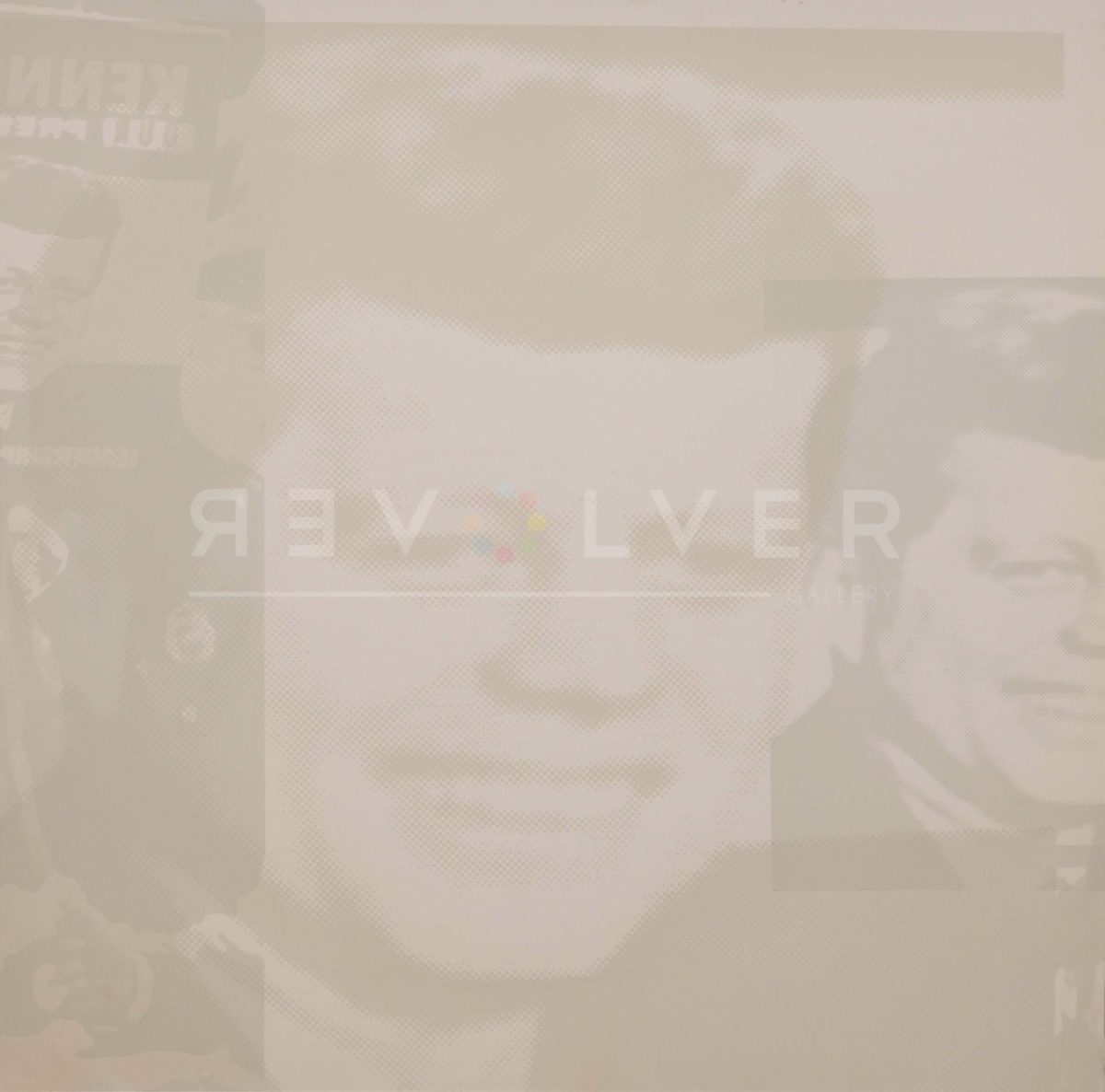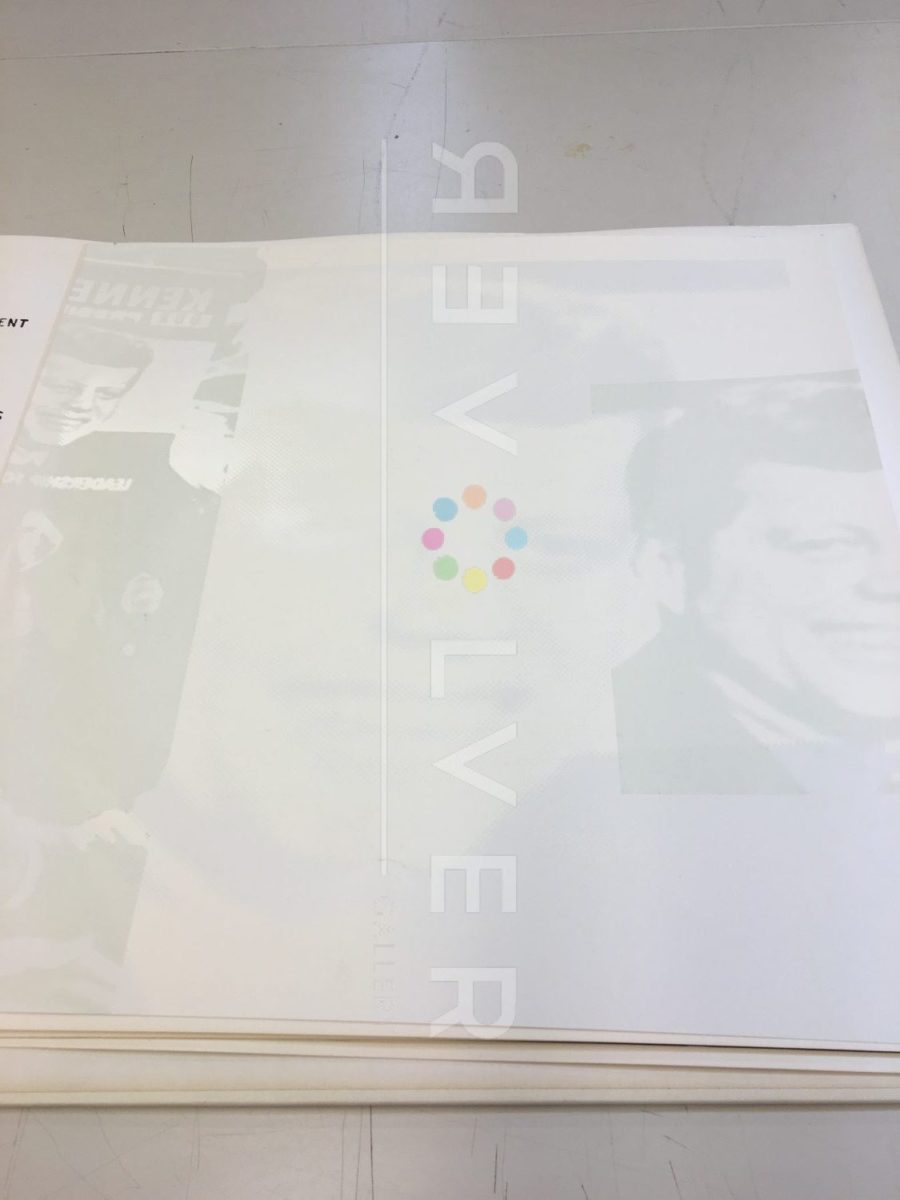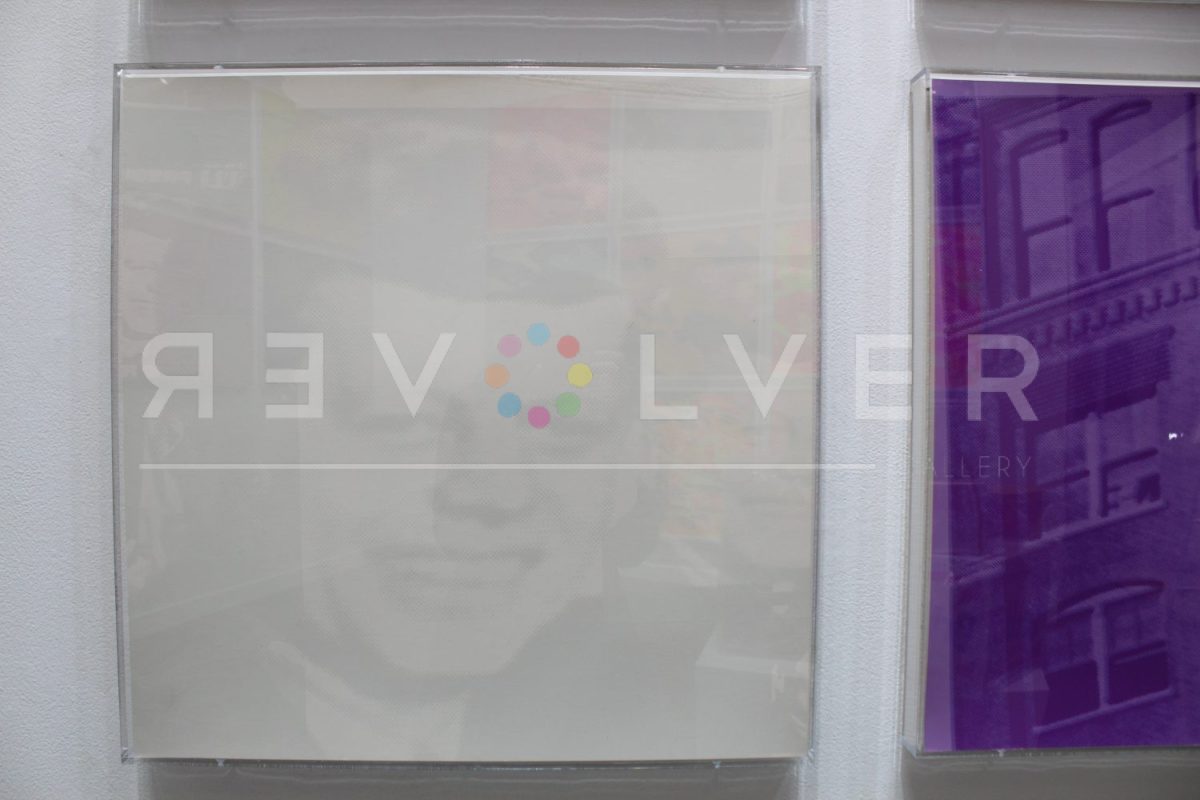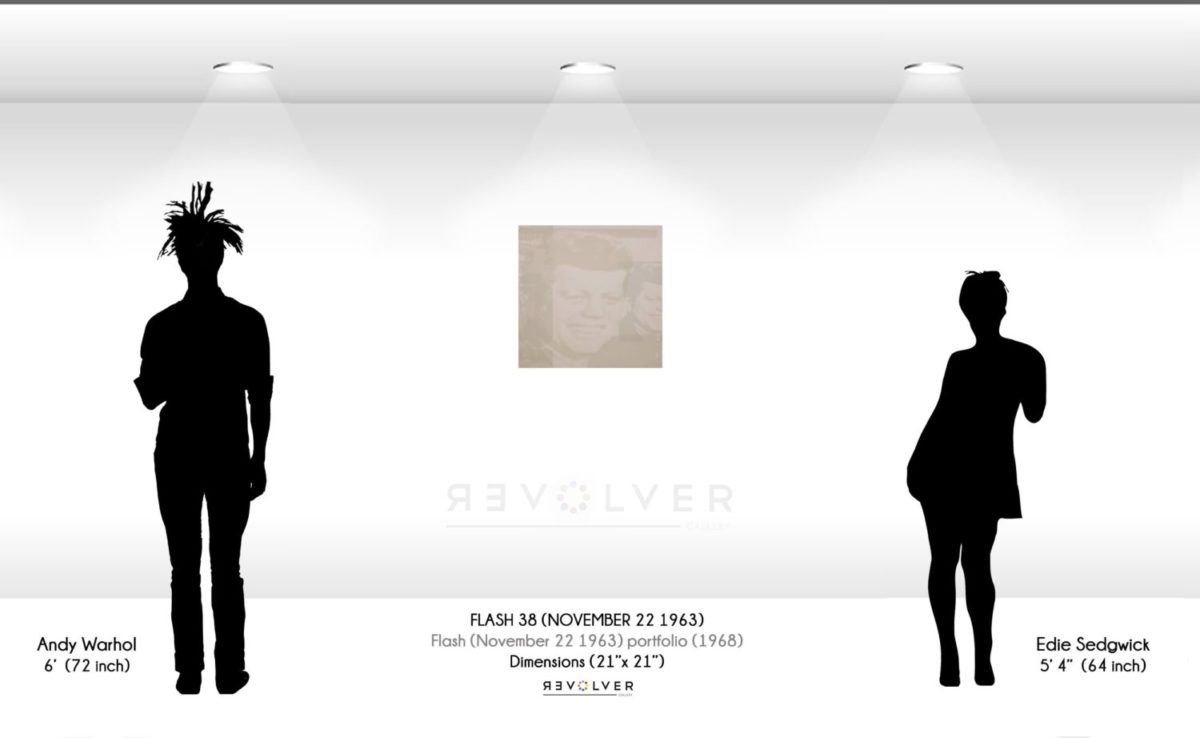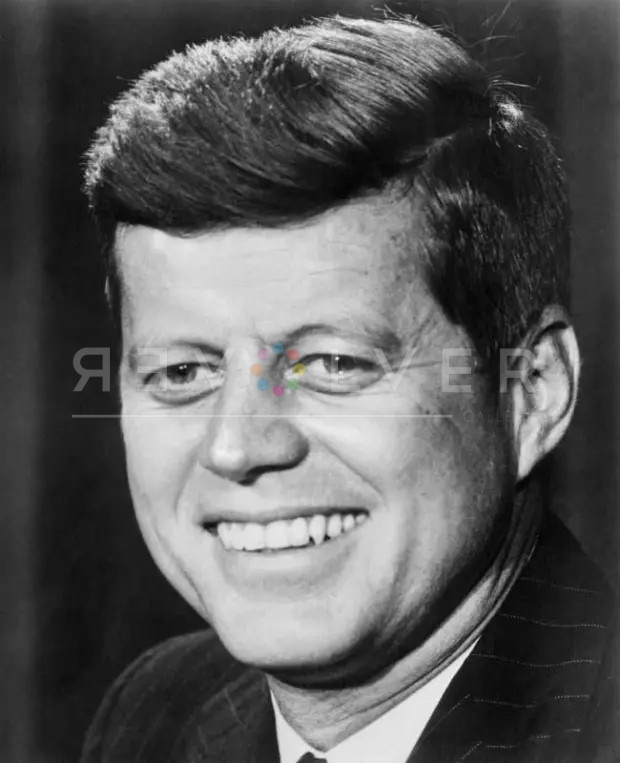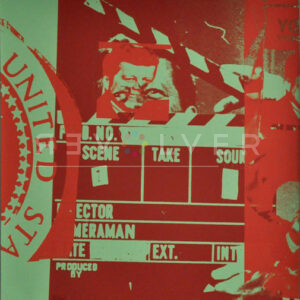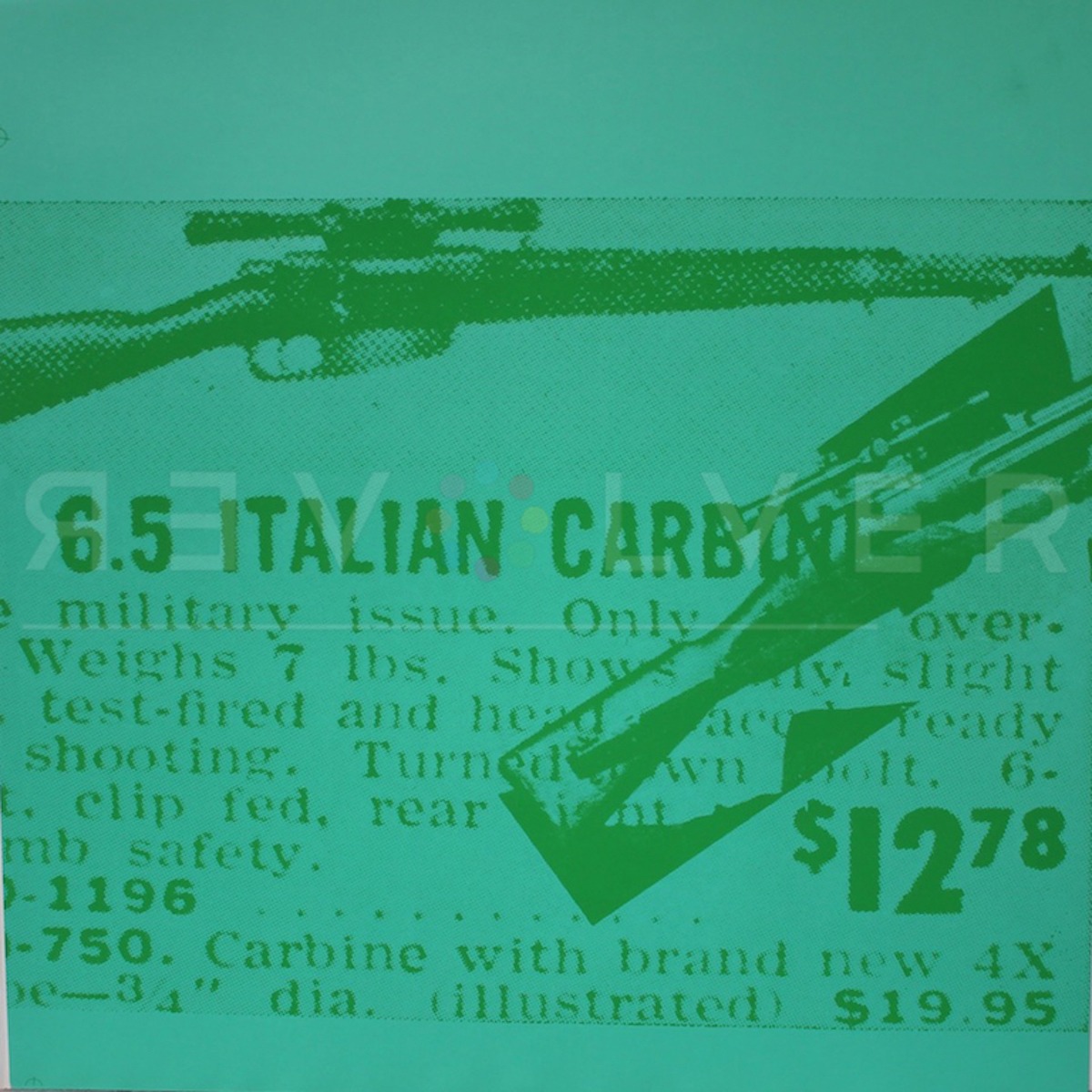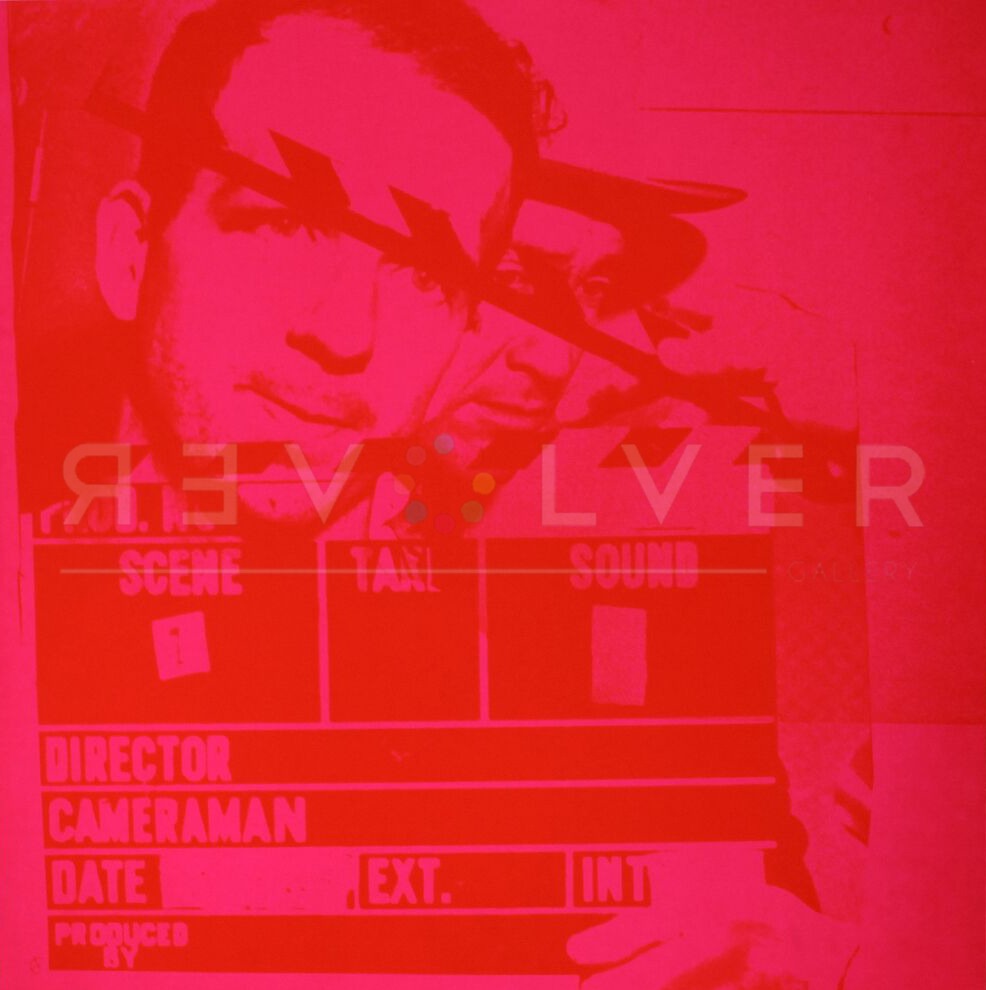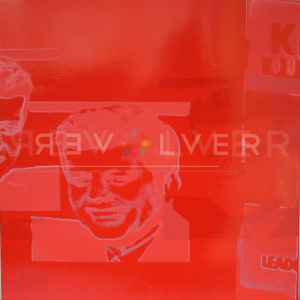Flash 38 is a screenprint by Andy Warhol from the artist’s Flash series from 1968. The Flash portfolio is a series of 11 images based on the assassination of John F. Kennedy. The work demonstrated Warhol’s willingness to cross certain boundaries to create striking social commentary. The American obsession with death and tragedy fascinated him. This obsession came to a head in the aftermath of the Kennedy assassination. Warhol is quoted saying, “What bothered me was the way television and radio were programming everybody to feel so sad. It seemed like no matter how hard you tried, you couldn’t get away from the thing.” This sentiment relates heavily to Warhol’s Death and Disaster series, a loose collection of artworks showcasing tragic images from the media.
The Kennedy assassination was so prevalent in public consciousness that images of the late President became inseparable from our conception of the tragedy. To Warhol, this was emblematic of society’s focus on violence and mortality. The Flash portfolio captures this mania using stills from advertisements, campaign posters, and news. The title references the unavoidable “news flashes” that were constantly in public view after the incident.
Warhol completed the series in the late 1960s, while the national wound of the Kennedy assassination was still healing. This made the series scandalizing to many, but Warhol was no stranger to controversy. By pushing the envelope, Warhol challenged how people viewed the world, and highlighted his culture’s relationship with violence. Death and tragedy have long been the subject of cultural taboos, and Warhol found these topics very interesting. Warhol believed that a focus on death distracted one from life. In The Philosophy of Andy Warhol, he wrote on death, “I don’t believe in it, because you’re not around to know that it’s happened. I can’t say anything about it because I’m not prepared for it”. Warhol aspired to live free from the constant presence of death and thoughts of mortality.
Yet American society, Warhol observed, had an obsession with death and disaster. After the Kennedy assassination, this fixation was particularly apparent. Kennedy’s likeness, which formerly stood for charm and personability, as well as the ambitions of a newly-transformed nation, became inextricable from tragedy after his assassination. In any other context, the images of Kennedy that Warhol selected may have stood amongst his glamorous celebrity portraits. In Flash 38, JFK’s characteristic smile takes center stage. It reminds the viewer of his personal brand, and does so as effectively as any of Warhol’s less tragic subjects.
In the style that characterizes Warhol’s Flash, the artist demonstrates how such images came to be a gruesome focal point for society. Though the image used for Flash 38 reflects the subject’s vivacity, the faded lines and black-and-white coloration expertly call to mind the context of the image. Warhol does not allow the viewer to see Kennedy objectively, but forces a recognition of his death. Kennedy’s face fades into a white background, his expression lined by faint grays, suggesting the ephemerality of life.
In Flash 38, Warhol retains the signature style that makes his screenprints aesthetic triumphs. Displayed alongside his lighter work, the same of Kennedy may be right at home. And yet, by capturing a historical moment, Warhol calls to mind the chaos and fear of the time with precision. He comments on our relationship with tragedy, mortality, and how one’s view of life may be shaped by a focus on death. Flash 38 is one of Warhol’s most intellectual and haunting prints.
Photo credit: Undated headshot of John F. Kennedy, 35th President of the United States. Washington, DC, USA. Photo by White House via CNP.

